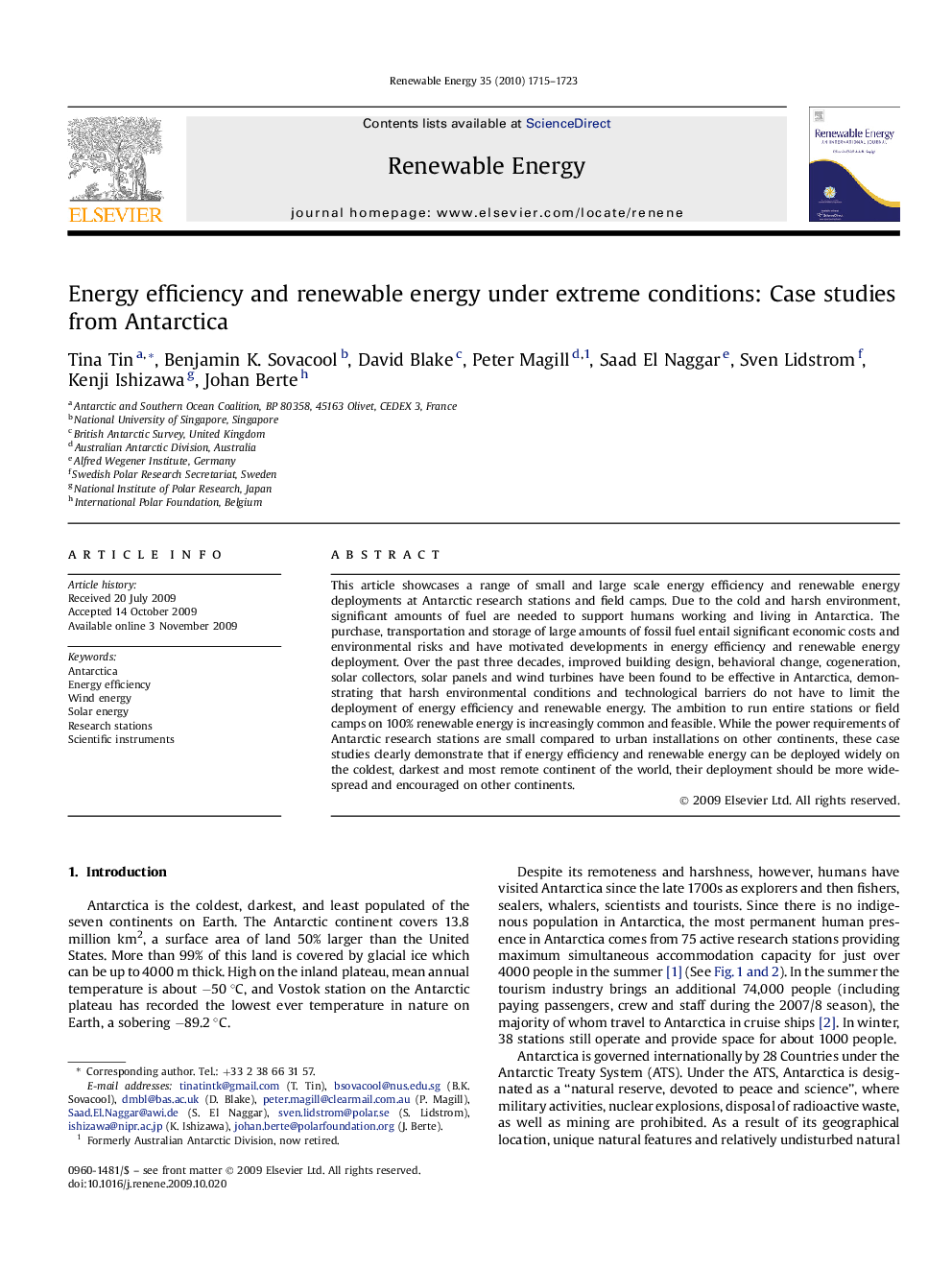| Article ID | Journal | Published Year | Pages | File Type |
|---|---|---|---|---|
| 301758 | Renewable Energy | 2010 | 9 Pages |
This article showcases a range of small and large scale energy efficiency and renewable energy deployments at Antarctic research stations and field camps. Due to the cold and harsh environment, significant amounts of fuel are needed to support humans working and living in Antarctica. The purchase, transportation and storage of large amounts of fossil fuel entail significant economic costs and environmental risks and have motivated developments in energy efficiency and renewable energy deployment. Over the past three decades, improved building design, behavioral change, cogeneration, solar collectors, solar panels and wind turbines have been found to be effective in Antarctica, demonstrating that harsh environmental conditions and technological barriers do not have to limit the deployment of energy efficiency and renewable energy. The ambition to run entire stations or field camps on 100% renewable energy is increasingly common and feasible. While the power requirements of Antarctic research stations are small compared to urban installations on other continents, these case studies clearly demonstrate that if energy efficiency and renewable energy can be deployed widely on the coldest, darkest and most remote continent of the world, their deployment should be more widespread and encouraged on other continents.
